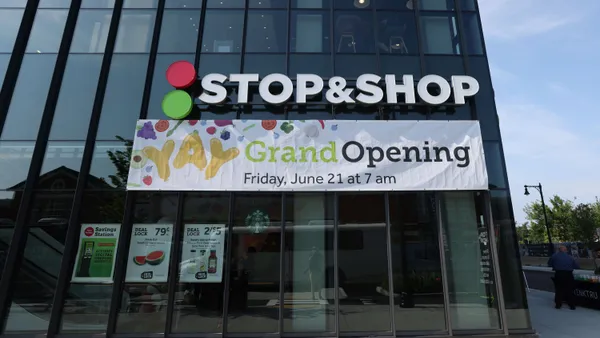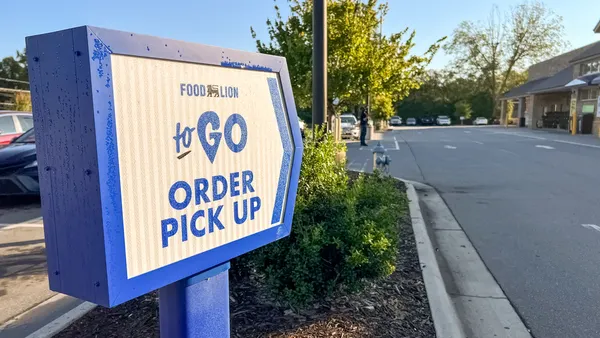Dive Brief:
- Real estate firm CBRE has released a new report that offers 11 predictions for the U.S. grocery industry within the next decade as the grocery landscape continues to shift, grocers diversify their offerings and technology plays a bigger role.
- Among the top predictions, CBRE anticipates that the grocery checkout line will disappear within 10 years. The report also suggests that major grocery operators will take on more convenience store formats and that grocers will explore collaborations and higher margin merchandise.
- In the coming years, CBRE also expects grocers to invest more in in-store technology and omnichannel services, as well as store remodels and redesign to battle supercenters, warehouse clubs and smaller formats.
Dive Insight:
Growth in online grocery, more in-store technology and increased competition from alternative formats are key factors that will shape the future of grocery stores, but CBRE believes the brick-and-mortar grocery store will remain central to the industry and the customer experience.
According to the report, e-commerce will account for 5% to 10% of grocery market share by 2022, and while that will alter the way grocery stores operate, online grocery will not replace the physical store experience. The effects of e-commerce will vary based on location, with urban centers seeing faster growth overall. In suburban and rural areas, click-and-collect models will be more widely adopted.
The report also suggests an increase in both revenue and real estate for smaller format stores and nontraditional grocery concepts, from large warehouse club stores and discounters to specialty grocers focused on health and ethnic foods. CBRE expects that rather than losing market share to these formats, traditional grocers will diversify their portfolios to gain some. Larger grocery chains are also more likely to acquire smaller and regional chains.
As the industry has seen recently, prepared foods and meal kits will remain a focal point, with the report predicting that prepared foods will gain ground on meal kits as grocers expand their product selection in stores. While both options will remain popular with convenience-seeking shoppers, the desire for prepared foods that don't require any cooking will grow among busy consumers. Prepared foods and meal kits will see more demand in higher income, millennial-dense areas, the report said.
Many grocers are including extensive foodservice offerings in their new or renovated stores like H-E-B's planned South Congress store in Austin, Texas, or Kroger with its new grocerants. Foodservice isn't just a major focus point for traditional grocers but also convenience stores. In fact, it makes up 23% of their sales. Leaders in the foodservice space for c-stores includes Wawa, well known for its subs, 7-Eleven, which recently launched a labstore in Dallas chock full of ready-to-eat items, and QuikTrip, which expanded its menu to include sub sandwiches in limited locations.
From in-store robots like Giant's Marty or Walmart's Alphabot to scan-and-go features, which 7-Eleven debuted last year and Wegmans rolled out recently, the rise of technology in the store will continue to change the way grocery stores operate. The benefits, according to CBRE, are lower operational costs, streamlined logistics and customer convenience. Checkout lines could disappear completely, and retailers will have more free shelf and floor space for click-and-collect and other products and services.
The overall takeaway? Although the traditional grocery model will evolve and the way shoppers purchase may change, growth in the grocery industry, which is historically stable, will remain steady and dependable in the coming years.













